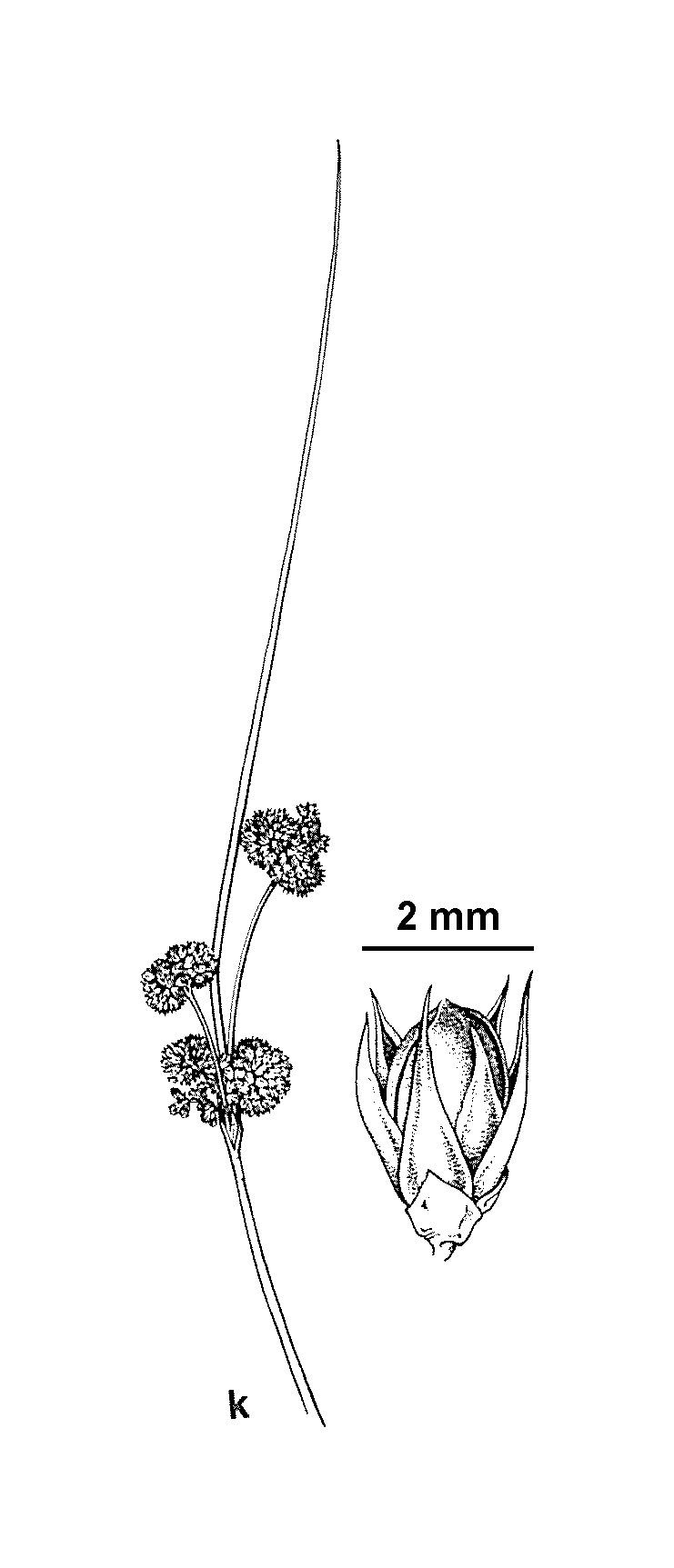Juncus australis
Hook Austral RushLoosely tufted perennial with horizontal or ascending rhizomes. Cataphylls tight or loose, dark brown or rarely light brown towards the base, to c. 22 cm long. Culms erect, not easily compressed, dull green to dull blue-green, 60–120 cm high and (1.5–)2.0–3.0(–4.0) mm diam.; striations 30–60, regularly spaced, moderately strongly raised; pith interrupted throughout, usually with large air spaces, very rarely continuous (if so then moderately dense); stomates sunken in pits. Inflorescence with flowers aggregated into one to many ± sub-globular clusters, the clusters close or distant; primary bract continuous with culm, to c. 30 cm long; prophylls present. Tepals stramineous or with a faint reddish-brown longitudinal band on either side of the stramineous midrib, 2.2–3.0 mm long; stamens 3–4, anthers 0.5–0.8 mm long. Capsule stramineous with a golden-brown apex, shorter than, equal to, or very rarely exceeding the tepals, 2.0–3.0 mm long. Flowers mostly Oct.–Feb., seeds shed mostly Dec.–Apr.
Wim, GleP, VVP, VRiv, MuF, GipP, OtP, WaP, Gold, CVU, GGr, DunT, NIS, EGL, EGU, HSF, HNF, OtR, Strz, MonT, HFE, VAlp. Also SA, NSW, ACT, Tas. New Zealand. Occurs in wet depressions and along drainage lines from sea-level to the subalps.
Closely resembles Juncus amabilis and J. flavidus and is distinguished by the characters provided in the key. Juncus australis also resembles J. gregiflorus, but differs in its more open habit, dull culms, stomates sunken in pits, acuminate tepals (the tips of which are easily broken) and usually paler, obtuse capsules. Hybrids with J. subsecundus and J. flavidus are known.
Albrecht, D.E. (1994). Juncus. In: Walsh, N.G.; Entwisle, T.J., Flora of Victoria Vol. 2, Ferns and Allied Plants, Conifers and Monocotyledons, pp. 197–233. Inkata Press, Melbourne.
 Spinning
Spinning


